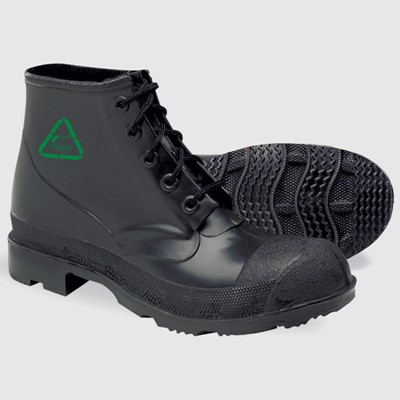A Guide to Foot Protection
Protecting and preventing injuries to workers' feet is an important part of your safety program. Injuries can include and result from:
- Impact from heavy falling objects
- Crushing by machinery rolling over the feet
- Punctures from stepping on something sharp
- Burns from chemical splash
- Shocks from electricity
- Extreme cold, heat, and moisture
- Additional bodily injuries from slipping and falling
Make it easier to keep workers safe, comfortable, and productive with the right foot protection. You can count on Northern Safety for the best footwear at the best prices.
About Foot Protection
Leather Work Boots
Types of leather work boots include plain toe and styles with built in toe protection. The protective toes on boots can be steel or composite, and both protect the toes from being crushed. Composite toe boots are usually lighter weight, non-conductive to electricity, and resistant to extreme cold and heat.
Boot Linings
Boots may include polyester, nylon, or fleece linings. Felt liners ensure excellent cold environment foot protection. Leather work boots are available unlined or with a lining. Types of linings include:
- Thinsulate™ is a type of thermal insulation that adds warmth while allowing moisture to escape
- Dri-lex® wicks away moisture, ensuring a cooler, drier, and more comfortable boot
- Cambrelle® linings are breathable and can manage moisture and odor for added comfort
- Gore-Tex® footwear linings are waterproof and breathable to keep feet dry and comfortable
Overboots & Overshoes
Overboots and overshoes are available in a variety of materials to protect workers, including rubber and synthetics. These boots are available with many features, including steel toes, steel puncture resistant midsoles, metatarsal guards, and slip resistant soles. Because environments can vary widely, protective footwear is available for hazmat protection, chemical resistance, cold weather conditions, and much more.
Additional Protection & Accessories
Protection is available for the metatarsal bones on the top of the foot, puncture-resistant insoles, and rubber slip-ons with protective toes. You'll also find a wide assortment of footwear accessories.
Requirement Updates:
Please Note: OSHA's General Requirements and Criteria on Footwear remain in effect, although the ANSI Z41-1991 Standard has been withdrawn and replaced by ASTM F2412 - 05, Standard Test Methods for Foot Protection, and ASTM F2413 - 05, Standard Specifications for Performance Requirements for Foot Protection.
More Information:
Questions about Foot Protection?
Call our knowledgeable Technical Support Department at 1-800-571-4646, 8 am - 5 pm ET, Monday - Friday, or email us.



